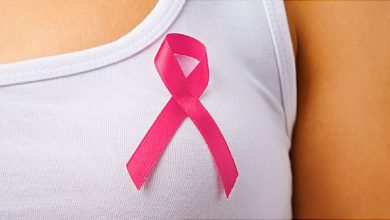Ending violence against healthcare workers starts with leadership

The stats are sobering: Violence is five times more likely to occur in hospitals than in the rest of the country’s workplaces, according to a recent review by the US Bureau of Labor Statistics. Violence in the healthcare workplace has increased every year since 2011–and the rate of violence against nurses and personal care facility staff is twice the rate for care workers other health.
In Pennsylvania, nurses have a higher risk of workplace injury from physical assault than most other professions. And the rate of workplace violence against all healthcare workers more than doubled between 2010 and 2020, according to data from the Pennsylvania Hospital and Health Systems Association.
Related: Healthcare facilities should be places of healing, not violence
At our own Allegheny Health Network, based in Western Pennsylvania, 89% of emergency department physicians reported being threatened by a patient or visitor in the previous year, and nearly half of our nurses have been physically assaulted by others throughout their careers.
There are very few hospitals that have yet to report a severe escalation of violence against caregivers in the COVID-19 era. In fact, a March survey from ECRI – an independent group that tracks trends in health care quality and safety – identified “verbal and physical abuse of health professionals” is the industry’s #2 concern by 2023, topped only by the child mental health crisis.
Those who do not work in a hospital setting may find this information shocking. Those who do, however, know the reality of it very well: Biting, punching, kicking, and verbal assaults have become a common hazard for healthcare providers.
That is unacceptable, and it must end.
No tolerance for violence
Violence against hospital caregivers is at such an epidemic level. The Joint Commission last year implemented new violence prevention standards for all hospitals recognized by the commission. Updated protocols include new guidelines regarding reporting and data collection, post-incident analysis, de-escalation training, and establishing a safety culture.
That last item is possibly the most important. As healthcare leaders, we must understand that patients and their families often come to our facility at the worst of times, on the most difficult days of their lives. Emotions and tempers are often elevated, especially in emergency departments and critical care settings.
But that sensitivity must have limits, especially when violence — or even the threat of violence — arises. We owe it to our nurses, doctors and other frontline staff to support them in such situations and to do whatever it takes to keep them safe.
Not a Modern Healthcare subscriber? Sign up today.
While there is no silver bullet that can limit violence in healthcare settings, it does start with a zero-tolerance policy for violent or abusive behavior. In healthcare, that kind of mindset requires a significant cultural shift.
For too long, violence has been expected—to some extent even tolerated—in our EDs. Experienced caregivers tell younger people that occasional assault is inevitable, and as a result it can be seen as a natural part of the workday. When that attitude prevails, “minor” incidents can be overlooked and not reported to management.
Fortunately, that is starting to change. At AHN and hospitals across the country, caregiver abuse is promptly addressed and reported, and patients and visitors are advised—through signage, counseling, and other methods. other means–that such conduct will not be tolerated and that assaults will be prosecuted.
It starts at the top of the page
Violence against carers cannot be seen as just an emergency department or security issue – it is a problem that needs to be addressed by everyone and should be a priority for the entire organization, starting from superiors.
Preparing for, responding to, and reducing violence requires a comprehensive strategy that includes input and support from hospital leadership, security forces, personnel, and support staff. patient safety responsibilities, clinical health care leaders, behavioral health professionals, and others.
Of course, the best way to combat violence in hospitals is to stop it before it begins.
That means investing in conflict reduction training for caregivers and other staff, and putting in place tools and processes that allow staff and security forces to quickly intervene when a patient or family members become belligerent and before the situation becomes unstable.
And while violence is never an appropriate response to long wait times, we must recognize our own role in creating stressful situations—not just in ED but in common areas where tempers can flare up. Reducing that stress means rotating clinical staff into waiting areas to provide more frequent patient updates, investing in patient flow coordinators who can help more effectively and take proactive steps to reduce emergency department traffic by directing care elsewhere when clinically appropriate.
Of course, violence can also stem from stressors that occur outside of the hospital, such as housing unrest, food insecurity, substance abuse or health problems. In terms of mental health, this is another reason health systems and other organizations prioritize strategies that focus on social factors that influence health.
Carer care
We recognize that even with the best efforts and programs, caregivers will always face some degree of risk. That’s why it’s so important to wrap our team members with all the support they need. When an incident occurs, we provide therapy to help employees recover from the trauma of the experience. We conduct interrogations, collect data, flag repeat violators, and pursue criminal charges when grounded.
Our actions must be immediate and purposeful. Nothing frustrates team members more than feeling like there is no adequate response or consequence to acts of violence against them.
To be the best they can be for their patients, healthcare providers must create the safest work environment for those who choose these healing professions and who help us every day. day fulfills its promise to build safer, healthier communities.
Download Modern Healthcare’s app to stay informed when there’s breaking industry news.




